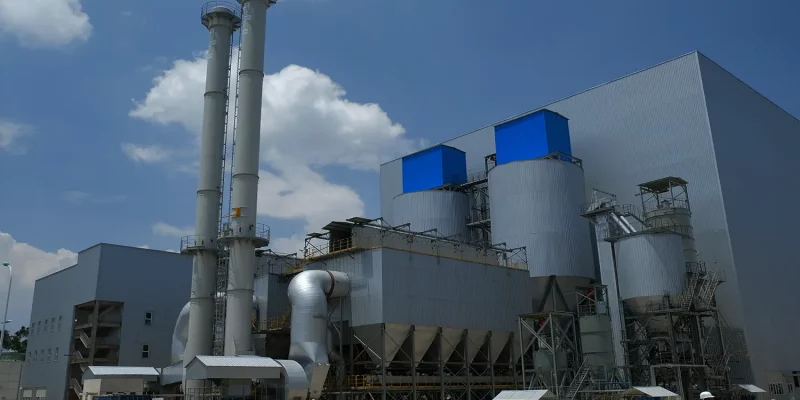Waste to Energy
INTIO Waste to Energy technologies: A Growing Alternative for Sustainable Development. It demonstrates a cost-effective and locally relevant solution to the current energy and grid shortage across Africa and provides a scalable infrastructure project going forward.
INTIO’s waste-to-energy technologies are competitive on availability and reliability. We leverage our global strengths and opportunities to provide systems that are priced at approximately 50% less than the average costs of competing Waste to Energy (WTE) solutions on a per MW basis and over 50% less in gasification supply. Our private equity partners contribute up to 50% of the resources needed for project implementation through public-private partnerships for up to a 30 MW WTE capacity plant and waste collection centers.
The units produce fuel (biodiesel or ethanol) and biochar. The biochar produced can be used in farming and sold as soil improvers and crop productivity boosters at various agro-parks throughout the region.
Waste to energy (WTE) is an attractive option for how societies can use their waste and find clean, renewable energy. WTE systems utilize a range of technologies that take advantage of the natural properties of trash and other discarded materials to generate electricity and reduce the amount of waste sent to landfill.
Understand the Basics of Waste to Energy
To get the most out of a WTE system, it’s best to understand how it works and the variety of methods used in the process. Thermal treatment systems are the most common type; in these systems waste is burned at high temperatures and the heat generated is used to produce steam. This steam turns turbines to generate electricity. Chemical processes, such as gasification and pyrolysis, can also be used to break waste down into combustible gases which can then be burned for thermal energy production.
Benefits of WTE for Sustainable Development
In addition to reducing waste generation, waste to energy is advantageous for a variety of other reasons. WTE plays an important role in sustainability by providing a clean energy source that can be used in place of fossil fuels. Additionally, it can benefit local economies by creating jobs associated with the process, such as design and maintenance work. WTE can also improve air and water quality since there will be less waste entering landfills, which can produce harmful toxins when breaking down.
Applications of Waste to Energy Technologies
Waste to Energy (WTE) technologies have a variety of applications. Incineration is one of the most common solutions for WTE where combustible materials are heated, releasing energy and capturing pollutants. Gasification is also used for transform organic materials into syngas which can be converted into other fuels like ethanol or biogas. Anaerobic digestion is another option, focusing on the decomposition of organic material in a controlled environment providing both energy and fertilizer.
Challenges to Waste to Energy Programs and Solutions for Them
While WTE programs are becoming more sustainable, there are still obstacles that need to be addressed. One problem is the high costs associated with these programs, which make them inaccessible to many communities. Other issues, such as public concerns about pollution and health effects, can also impede the adoption of WTE technologies. To overcome these challenges, communities need to ensure that waste resource management systems are transparent and accountable while providing education and outreach to address safety and environmental concerns.
Examples of International WTE Projects and Programs
The Global Waste to Energy Research and Technology Council (GWRTAC) is a network of around the world that works to identify, promote, and develop best practice models for WTE. The GWRTAC supports a variety of international WTE projects and programs, such as pilot trials in Taipei, Taiwan; Dubai, United Arab Emirates; and Istanbul, Turkey. These programs aim to reduce waste production while providing clean energy to support economic growth. Additionally, other countries like Brazil and Indonesia have developed national resource recovery mechanisms which encourage the commercialization of recycled materials from waste streams.

How we help
INTIO Renewable Energy focuses on financing and investing following the triple bottom line principle of social, economic, and environmental accountability and sustainable investment, while meeting Sustainable Development Goals (SDG). We work with venture capital, private equity funds, family offices, and investment banks dedicated to green investment vehicles that do not invest in carbon based energy technology. Our private equity division is focused on renewable energy, with the specific aim of increasing technology innovation through exposure to projects across Eurasia, Sub-Saharan Africa, and Latin America.
Need more information?
Tell us about the challenges your business faces and find out how partnering with INTIO could make the difference.
We help nations materialize the better cost-benefit of implementing waste to energy technologies at an operational scale. INTIO's systems include a significant number of high quality, commercial, off-the-shelf components from major firms, and original equipment manufacturers to reduce engineering and manufacturing costs.

